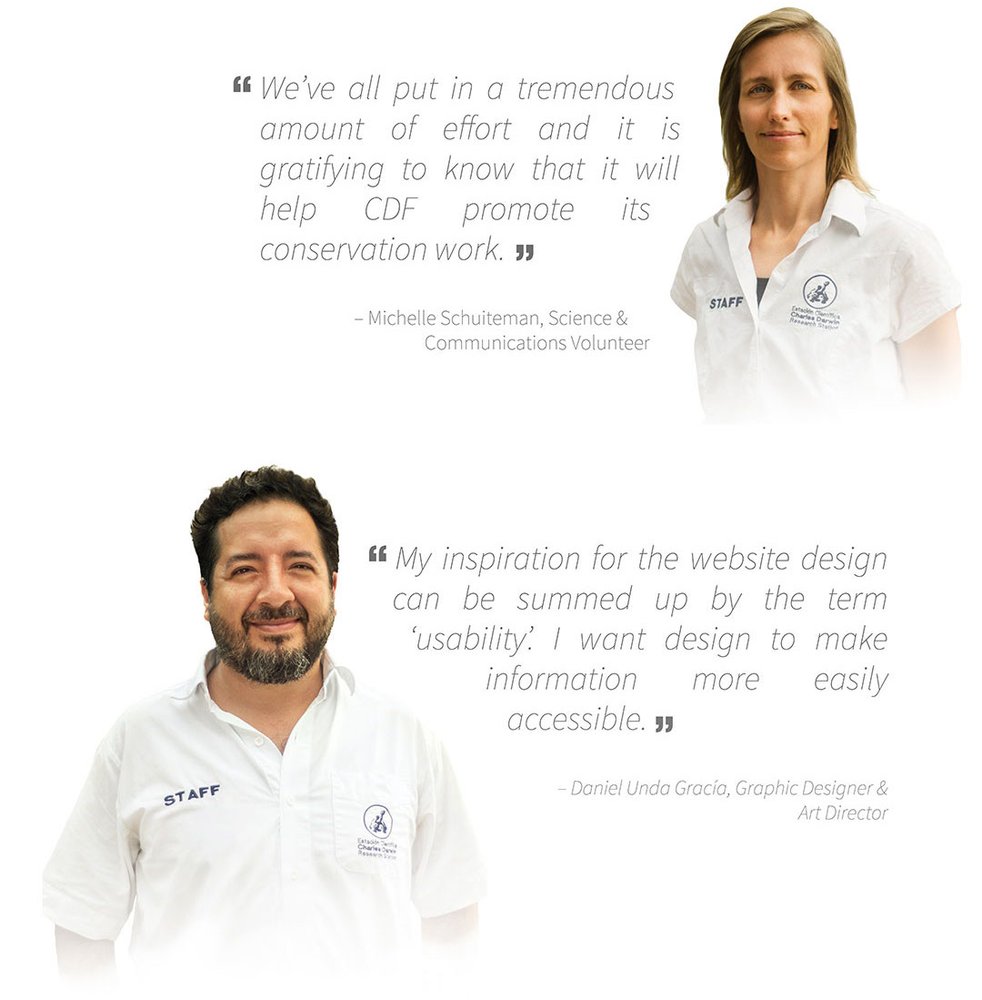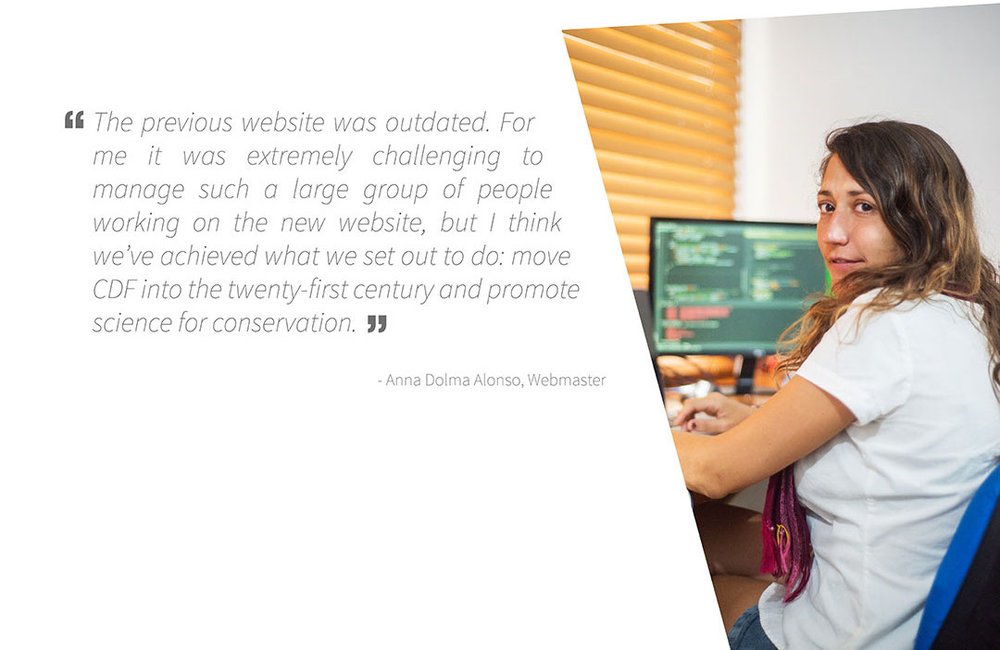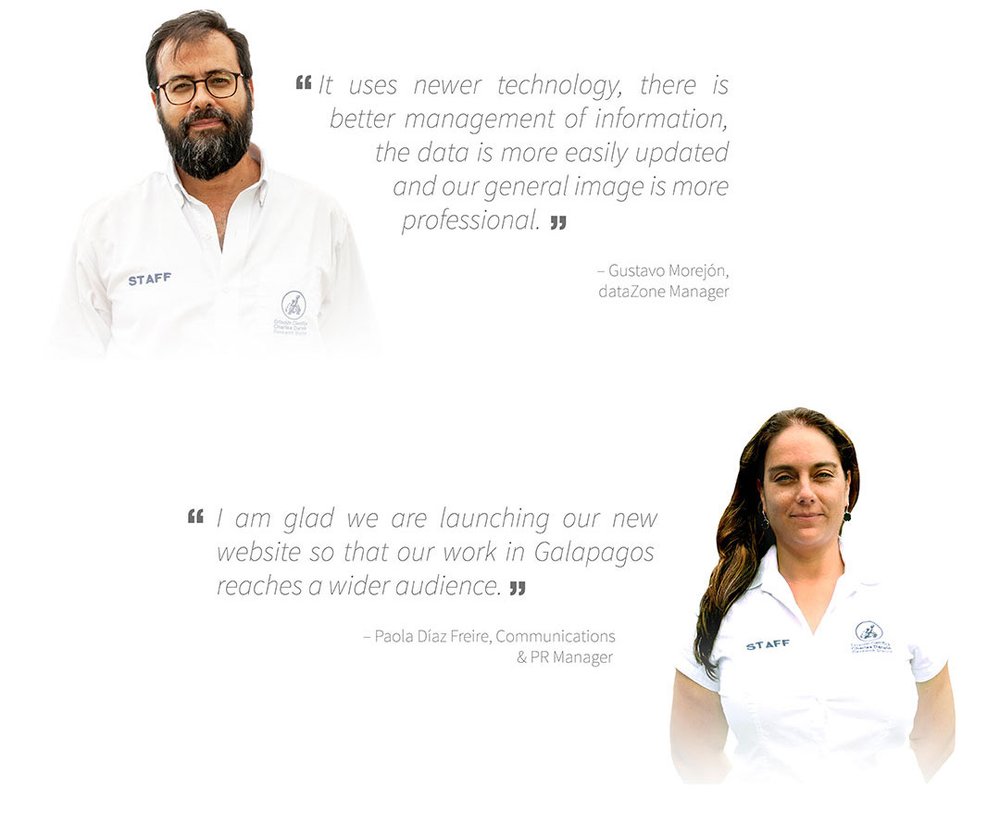
Today, February 12th, is a very special day for the Galapagos islands, and the Charles Darwin Foundation (CDF). Not only was it Charles Darwin’s birthday in 1809, but it was also the day in which the archipelago was officially incorporated into Ecuador’s national territory in 1832. There couldn’t be a more significant day to launch CDF’s brand new website. For a conservation organization like ours, working on a small budget and depending entirely upon the generosity of donors, it is particularly important to tell our story and reach a wide audience online. Preserving Galapagos, UNESCO’s first World Heritage Site, is our main goal and we would like the world to learn about the science which makes conservation possible.
Our very first website was launched in 2001. Although it was very informative and revolutionary in its time, eventually it became outdated. The website was constantly evolving, but we needed a radical change. Now, 17 years later, we are able to update its design, structure, contents and navigability so that people all over the world can continue to intuitively learn about our scientific research using one of the latest programming languages and content management systems. The new design can also be accessed on any device, including tablets and smartphones.
We wanted to give the Charles Darwin Foundation’s website a more streamlined and friendly look, while also presenting essential information for each of the scientific projects that we conduct on the islands. Additionally, we have prioritized audiovisuals (infographics, videos, and photos).

CDF’s Knowledge Management and Communications teams have worked together to make sure that all aspects of structure, design, and content are taken into account for our new website. It is truly remarkable what has been accomplished by a dedicated group of professionals who work with many challenges, including the archipelago’s slow Internet connection. Working on the website was a long process of sweat and tears, but also accompanied by lighthearted moments such as the time when one of our programmers cooked some cupcakes for the whole team. Our Webmaster, Anna Dolma Alonso, explains the difficulty of managing information on our previous website and why the new one is a great improvement:

Gustavo Morejón, dataZone Manager at CDF, made it clear that this is only the first phase of the website. During the second phase, more interactive information on our dataZone collection databases will be available. He is really excited about the improvements to the collections section of the website, thanks to the use of microchips and high-resolution photographs. Currently, of the three billion specimens worldwide, only 10% have been digitized and could easily be lost or damaged.

We would like to thank the Leona M. and Harry B. Helmsley Charitable Trust for financing this project and JoomLead for giving us the design template that the website was based on.
Our work in Galapagos depends on the generosity of our supporters. We would like to welcome you to visit us and donate today to help us with our conservation work.





